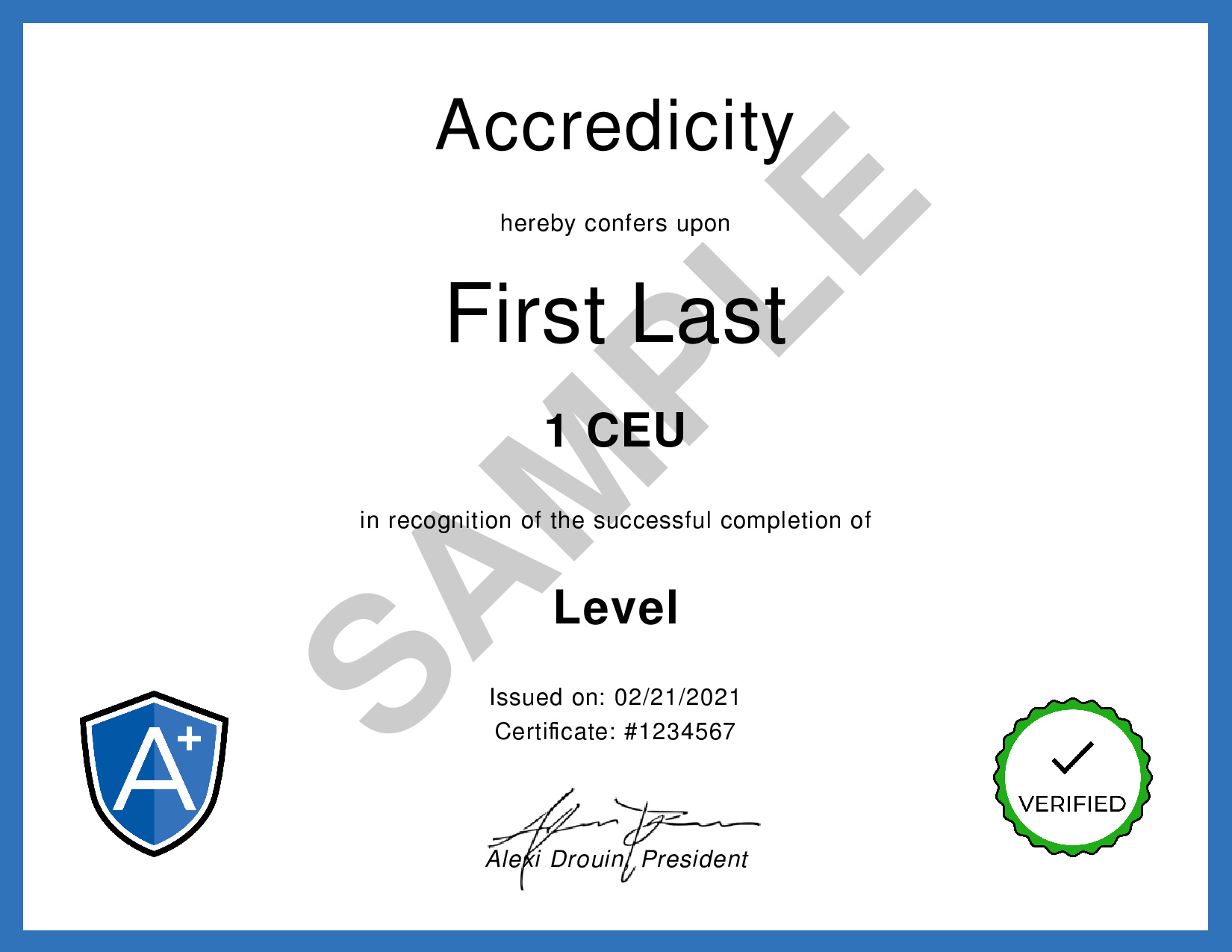SS03: The Secret to Business Writing | CrashCourse
Reference: CrashCourse. (2019, March 27). The Secret to Business Writing: Crash Course Business - Soft Skills 3 [Video]. YouTube.
We Make Your Education Count

Get the Credit You Deserve and Become the Most Attractive Job Candidate by Earning and Posting A+ Badges to Your Linkedin Profile.
Sign Up to Get Started at Accredicity
Captivate: Science of Succeeding with People | Vanessa Van Edwards | Talks at Google
 94 Creds - Communication
94 Creds - Communication|
Discover the Secret to Writing Successfully with Crash Course Business: Soft Skills 3! The Secret to Business Writing is an educational video from CrashCourse featuring Evelyn from the Internets. In this video, Evelyn explains the importance of crafting persuasive business writing to build a professional reputation for yourself. She explains that the content and structure of your writing depends on who you're writing for, which goes back to influence. Evelyn gives tips on how to tailor a message to an audience, from conducting an audience analysis to understanding the trust you have with someone and framing your message around it. Lastly, she discusses the various types of writing used in the workplace and how to make sure your message conveys the essential details in an efficient way. Learning OutlineMain points to learn from this video: Instructional ContentThe Secret to Business Writing: Crafting persuasive content quickly and efficiently In today’s business world, writing plays an important role in building your professional reputation. Whether it’s a quick message asking for a sick day, a letter to a client, or a report to get a promotion, you want to make sure that what you’ve written is persuasive and effective. In this Crash Course Business: Soft Skills 3 video, learn how to craft persuasive content quickly and efficiently. Before you start writing, it’s important to conduct an audience analysis. You want to tailor your main message to who they are and how much they’re going to critique your work. Once you understand your audience, you can use the three classic elements of rhetoric – logos, ethos, and pathos – to draw them into your message. When deciding what type of writing to use, consider the trust you have with your audience, the importance of the decision to them, and if they are hostile or resistant to what you’re saying. Depending on your audience, you may be sending an email, memo, letter, or report. No matter what you’re writing, you want to give your audience the essential details. To make sure your writing is concise and effective, identify your argument and main points before you start writing, and don’t bury the lede. By understanding your audience and focusing on writing persuasive content quickly and efficiently, you can ensure your message is heard. Watch the video to learn more about the secret to business writing and how to craft persuasive content quickly and efficiently. Communication
|

Writing is an important part of being successful in a job. When you write, you need to think about who you're writing to. That way, you can make sure your message is clear and convincing. You need to consider how involved they are, if they trust you, how important the decision is, and if they are hostile or resistant to your message. There are different types of writing - emails, memos, reports and letters - but the most important thing is to make sure your writing is direct, clear and to the point. This will help you get your message across without overwhelming your reader. Video Quotes1. "Crafting a persuasive argument goes back to the foundations of rhetoric. Logos, ethos, and pathos." - Evelyn from the Internets Related Quotes"It's important to remember that when you're writing for business, you're writing for a purpose, and it's not just to entertain." - Sabrina Parsons, CEO of Palo Alto Software. "The way that you write should reflect the professionalism that you want to project to your colleagues, your customers, and your partners." - Sabrina Parsons, CEO of Palo Alto Software. "Writing is not just about getting your words on the page, it's about conveying your message effectively." - Sabrina Parsons, CEO of Palo Alto Software. Competencies1. Written Communication Learning Outcomes1. Analyze the appropriate audience for a piece of writing based on trust, importance of the message, and potential hostility to the message (Bloom’s Taxonomy: Analysis). 2. Evaluate the most effective ways to craft a persuasive argument through logos, ethos, and pathos (Bloom’s Taxonomy: Evaluation). 3. Compile the 5W’s and the H to determine the essential details for each type of written communication (Bloom’s Taxonomy: Comprehension). 4. Summarize the importance of succinct and purposeful writing to maintain efficiency (Bloom’s Taxonomy: Synthesis). 5. Identify the main argument and key points in order to stay on track when writing (Bloom’s Taxonomy: Knowledge). 6. Create a narrative to appeal to an audience that is searching for something specific (Bloom’s Taxonomy: Creation). Sample AnswersI learned that it is important to consider the audience before writing, to tailor your main message to their needs. You should conduct an audience analysis to determine how involved your audience is, and use logos, ethos, and pathos to craft a persuasive argument. Additionally, I learned that the type of writing you use should depend on who you are writing for and what the purpose of the writing is. For example, emails, memos, letters, and reports can all be used for different purposes and to different audiences. Evelyn from the InternetsEvelyn from the Internets is a professional content writer and editor with over 10 years of experience in creating corporate content and copywriting. She has a degree in English Literature and a certification in Copywriting from the University of Cambridge. Evelyn is an expert on The Secret to Business Writing as she specializes in crafting engaging and effective copy for businesses and organizations. She has experience working with a variety of clients in the corporate world and understands how to write content that is both effective and informative. Evelyn from the Internets is not associated with any organization or business. Learning DesignThe three competencies of Written Communication, Influence and Persuasion, and Communication Etiquette are important to learn in the context of a communication course. Written communication skills are essential for expressing ideas, opinions, and facts in a clear, concise, and organized manner. It is also a key component of effective overall communication, as written communication is often the primary way that we interact with others. Influence and Persuasion skills are important for conveying messages and ideas with confidence, as well as for persuading others to take action. Finally, communication etiquette is important for understanding the various expectations and conventions of communication in different contexts. AssessmentQ: What are the three elements of rhetoric that can be used to craft a persuasive argument? QuestionsQuestions: Real-Life Examples/Scenarios: KeywordsBusiness Writing, Soft Skills, Audience Analysis, Logos, Ethos, Pathos, Freelance Food Blogger, Corporate Writing, Efficiency, Redundancy, 5Ws, H, Argument, Lede Facts1. Writing before the invention of telegraphs, telephones and the internet often included pages and pages of flowery language. Trends1. Create an online guide for business writing tailored to different audiences, such as clients, colleagues and bosses. SourceThis learning instructional guidance was formulated using the GPT-3 language model created by OpenAI. ShareStart your day right with a delicious breakfast! Blueberry muffins are quick, easy, and sure to bring a smile to your face. #breakfasttime #muffinlove 🤩 @Accredicity |












